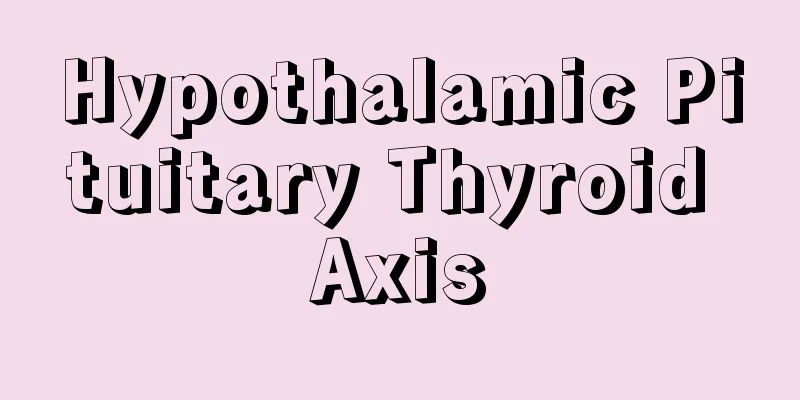Hypothalamic Pituitary Thyroid Axis

|
The hypothalamic-pituitary-thyroid axis refers to the connection between the hypothalamus, pituitary gland and thyroid gland. This area is critical for relieving depression and promoting the secretion of thyroid hormones. Du Yu’s introduction to the hypothalamus-pituitary-thyroid axis. I suggest that you can read the content of the article, which can increase your understanding of the functional organization of the human body. The key is to clearly understand the functions of the hypothalamus-pituitary-thyroid axis. The hormones released by the hypothalamus, pituitary gland and thyroid gland are thyrotropin-releasing hormone (TRH), thyroid-stimulating hormone (TSH) and thyroid hormones (T3, T4). The HPT axis is of great significance to neuronal excitability, behavior, neurotransmitter regulation and central nervous system development. Most patients with hyperthyroidism have symptoms such as anxiety, tension, and inattention; those with hypothyroidism are often accompanied by mental symptoms such as depressed mood, slow speech, and memory loss. On the contrary, many mental disorders, such as major depression and bipolar disorder, are often accompanied by abnormal thyroid hormone metabolism. 1. HPT axis and depression The thyroid function of patients with depression is basically normal, but there is relative hypothyroidism in the central nervous system. About 25% of patients with depression have abnormal TRH stimulation tests, that is, despite high central TRH secretion, the function of the pituitary TRH receptor is downregulated, resulting in a sluggish TSH response to exogenous TRH. Patients with depression also have a weakened circadian rhythm of TSH release and a reduced rate of conversion of T4 to T3. The thyrotropin-releasing hormone stimulation test (TRH-ST) that examines the function of the HPT axis is an important biological indicator of affective disorders. The serum TSH level was measured before and at different times after intravenous injection of TRH. The TSH level in normal people increases to varying degrees, while the TSH level in patients with depression is slow to respond to TRH. Combining DST and TRH-ST is more meaningful for the diagnosis of depression. Depressed patients who still have a sluggish TSH response to TRH and hyperfunction of the HPA axis after treatment have a high relapse rate. The use of thyroxine treatment can enhance the therapeutic effect of antidepressants. For example, adding T3 to tricyclic antidepressants can accelerate the onset of action of tricyclic antidepressants and enhance their efficacy. However, T3 alone has no antidepressant effect. 2. HPT axis and other mental illnesses Patients with obsessive-compulsive disorder, panic disorder, some schizophrenia and alcoholism may also have a dull TRH-ST response. HPT axis dysfunction also occurs in patients with bipolar disorder, such as hypothyroidism, enhanced TSH response to TRH, and increased plasma basal TSH concentration. Long-term use of lithium carbonate can suppress thyroid function, and about 30% of patients receiving lithium carbonate treatment have elevated TSH. |
<<: Nursing diagnosis and measures for anemia
>>: Will constipation cause back pain?
Recommend
The impact of gallbladder cancer removal on fertility
Cholecystectomy is a commonly used operation in b...
What should I do if I get sun spots on my face?
Spots on the back will affect a person's self...
What are the treatments for itchy ears?
The ear is one of the five senses of the human bo...
Can I eat cornmeal if I have high blood sugar? What are the benefits of cornmeal?
Nowadays, with the improvement of people's li...
Symptoms before death from advanced lung cancer
The symptoms of advanced lung cancer before death...
Femoral head fracture
When it comes to fractures, many people are famil...
Introduction to the three most common treatments for uterine cancer
Uterine cancer is a completely curable tumor dise...
Where is the best place to treat uterine cancer
Which hospital is good for treating uterine cance...
What are the characteristics of cervical cancer bleeding
Bleeding from cervical cancer is often a question...
Composition of white gasoline
White spirit is similar to gasoline. Although its...
Are microwaves harmful to the human body?
Most people are unfamiliar with microwaves and do...
Does skipping rope help you grow taller?
If you want to achieve the goal of fitness or hei...
How is prostate cancer caused? 4 causes of prostate cancer that should be avoided
The occurrence of prostate cancer can bring great...
What to do if your ear hurts due to a cold
Children's bodies are relatively fragile comp...
When is Ghost Festival? You must remember this in the future
The so-called Ghost Festival usually refers to th...









